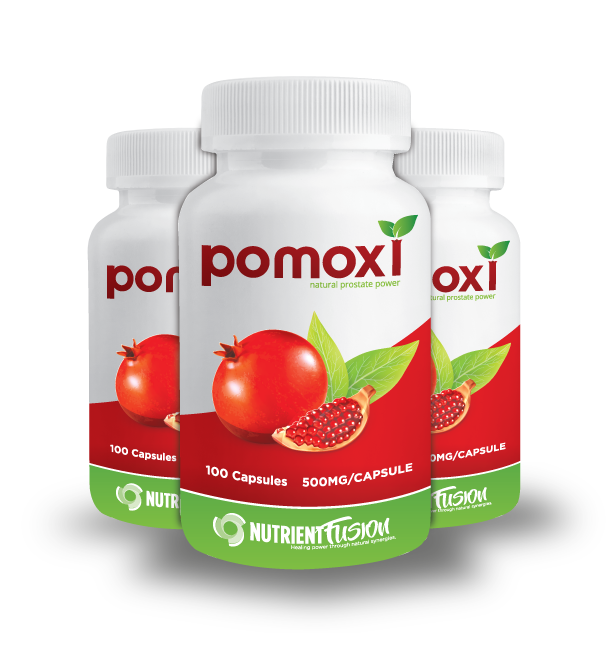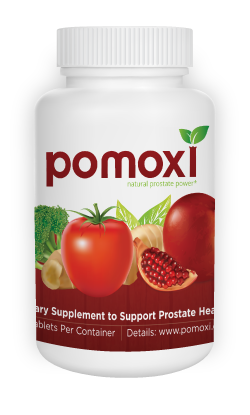Ginger
Powerful antioxidant and anti-inflammatory compounds that have been used for 1000s of years.

Subscribe and Save 15%
BUY NOW
The Science of Ginger
Ginger is a commonly used spice and herbal medicine that is used worldwide. Besides its extensive use as a condiment, ginger has been used in traditional Chinese medicine for its health-promoting effects.
Pomoxi’s Ginger extract supports prostate health by inhibiting the inflammatory markers, TNF-a, IL-6 and the master inflammatory gene, NF-kappaB. (1, 2, 3, 4).
Ginger is high in potassium and manganese, and is a good source of phosphorus; magnesium; calcium; beta-carotene; iron; zinc; and vitamins A, C, E and B-complex. Vitamins A, C and E and beta-carotene are strong antioxidants that can protect your prostate from harmful free radicals, which are linked to accelerated tissue aging. Vitamin C and zinc stimulate the immune system, which helps protect the prostate from foreign invading proteins.
There is a strong synergy of Ginger’s total components. Although 6-gingerol is most often reported to be the most active component in Ginger root, the whole Ginger extract has stronger antioxidant and health-promoting effects than 6-gingerol itself. (5)
Ginger is an excellent source of several bioactive phenolics, including non-volatile pungent compounds such as gingerols, paradols, shogaols and gingerones. accumulating evidence suggests that the repertoire of phytochemicals present in dietary agents works together through complementary and overlapping mechanisms to present optimal therapeutic health benefits. (5)
Ginger extract induces apoptosis (unhealthy cells self-destruction) through the cell’s mitochondria. (6)
Ginger extract treatment is non-toxic both in human cell cultures and in mice fed Ginger at high doses.
What is Ginger?
Ginger is a perennial plant, native to tropical and sub-tropical regions of Asia. It’s root (properly called a rhizome) has been used in food and medicine for thousands of years, including both in Traditional Chinese and Ayurvedic (Indian) Medicine.
Found in the same plant family as turmeric, galangal, and cardamom (Zingiberaceae), ginger contains a few health similarities with these herbs, along with its own unique health benefits – such as anti-nausea, immune, and digestive-stimulating properties.
Additionally, ginger has shown some amazing implications for prostate health. The rhizome contains antioxidant compounds that may protect the body, along with other potent phytonutrients that directly demonstrate health properties.
Considering a supplement containing ginger can be a wise supportive addition to one’s prostate health regime.
Though evidence for ginger is substantial, more studies are needed before determining the scope of its true potential.
Ginger’s Therapeutic Compounds
Ginger’s rich phytochemical makeup is responsible for its ability to support prostate health.
To date, ginger is known to contain:
- Gingerols
- Shogaols
- Paradols
- Gingerones
All of these compounds are “phenols,” meaning that they tend to be antioxidant in nature. On top of preventing the number of free radicals that circulate around the body – some of ginger’s constituents also exhibit direct benefits for prostate health in lab studies.
Each of these compounds appear to have a much greater benefit when consumed with one another – just as they are found in the ginger rhizome – rather than when each compound is extracted on its own. The most studied of these phenols are ginger’s shogaols and gingerols.
Gingerols
Many types of gingerols can be found within the ginger rhizome. These phenols are unique to the ginger plant – some of which have antioxidant properties.
Different types of gingerols work synergistically with one another, augmenting each other’s activities to create the strongest effect together rather than separately.
Shogaols
Shogaols are principally antioxidant phenols, which have some supportive properties for prostate health. However, when consumed along with gingerols, their impacts are greatly magnified.
While it may make more sense to place importance on consuming gingerol, in reality, getting as many of ginger’s phenols as possible is the best approach to using ginger as a supplement for prostate health because that is how they are found naturally in the rhizome.
To make this possible, either the whole rhizome should be eaten or all of its nutrients should be extracted in a phenol-rich supplement.
Food versus Supplement
All of ginger’s prostate-supporting compounds are found within the rhizome and when it is eaten, cooked, and/or used as a spice. But are the effects the same when ginger is consumed as a supplement, compared to when it is eaten as a food?
The answer is no. Trials have shown that consumption of ginger as food or spice – even the fresh rhizome – doesn’t provide enough of a benefit for your prostate.
Natural concentrations in the rhizome are simply not high enough to have the same benefits. Therefore, whole, concentrated extractions should be used instead as a supplement. Though you should also consider making the regular consumption of ginger root in your diet (as in some Asian diets) because that will have additional health benefits.
For higher protection and support, using ginger in whole supplement form is most advisable.
Using Ginger
Studies thus far suggest that ginger provides a non-toxic, harmless, and natural supplement option for supporting prostate health. For optimal benefits, up to 6 grams of phenol-concentrated whole ginger extract should be taken for the average adult.
Those who have stomach sensitivities, particularly to pungent and spicy foods, are the only ones who may experience some digestive discomfort.
Talk to your doctor about taking Pomoxi, a supplement that can bring added health effects to your prostate. It not only contains whole extract of the ginger rhizome, but many other all-natural, thoroughly-researched ingredients as well: including lycopene, reishi mushroom, quercetin, and much more.
References
1. Ali BH, Blunden G, Tanira MO, Nemmar A. Some phytochemical, pharmacological and toxicological properties of ginger (Zingiber officinale Roscoe): a review of recent research. Food Chem Toxicol. 2008;46(2):409-20.
2. Langner E, Greifenberg S, Gruenwald J. Ginger: history and use. Adv Ther. 1998;15(1):25-44.
3. Thomson M, Al Qattan KK, Al Sawan SM, et al. The use of ginger (Zingiber officinale Rosc.) as a potential anti-inflammatory and antithrombotic agent. Prostaglandins Leukot Essent Fatty Acids. 2002;67(6):475-478.
4. Saha, A, Blando, Silver, J. 6-Shogaol from Dried Ginger Inhibits Growth of Prostate Cancer Cells Both In Vitro and In Vivo through Inhibition of STAT3 and NF-κB Signaling. Cancer Prev Res. 2014 Jun;7(6):627-38.
5. Zick SM, Djuric Z, Ruffin MT, et al. Pharmacokinetics of 6-gingerol, 8-gingerol, 10-gingerol, and 6-shogaol and conjugate metabolites in healthy human subjects. Cancer Epidemiol Biomarkers Prev. 2008; 17: 1930–1936.
6. Annamalai G, Kathiresan S, Kannappan N. 6-shogaol, a dietary phenolic compound, induces oxidative stress mediated mitochondrial dependent apoptosis through activation of proapoptotic factors in Hep-2 cells. Biomed Pharmacother. 2016 Aug; 82: 226-36.


